BetterYouJourney.com is a participant in the Amazon Services LLC Some of the links in our posts are affiliate links. Click here to see full Disclosure.
As the dynamics of the global food market continue to evolve, farming has transformed from primarily a way of life into a diverse and profitable business sector. The growing awareness regarding health and environmental concerns has fostered emerging techniques and opportunities in sustainable farming. Embracing these modern farming practices not only helps in conserving resources and promoting biodiversity, but it can also prove to be a more lucrative endeavor for farmers. This exploration focuses on ten profitable farming business ideas from organic farming to fruit farming, each offering a unique business opportunity ready to be harvested.
Organic Farming
Organic Farming: A Profitable Farming Business Idea
Organic farming has emerged as a notable trend in the agribusiness sector, with escalating consumer awareness about health and the environment. At the heart of organic farming is the commitment to grow crops without relying on synthetic pesticides, genetically modified organisms (GMOs), petroleum-based fertilizers, and sewage sludge-based fertilizers.
The growing demand for organic food leads to favorable market dynamics for farmers who opt for organic farming methodologies. Interested farmers can venture into this profitable farming business idea to meet the robust demand. The organic products they grow can be sold directly to the customers who appreciate the transparency and trust this direct relationship builds. Simultaneously, these organic products can also be sold at local farmers’ markets, gaining access to an extensive consumer base that already values and seeks out organic goods.
Arguably, the most enticing aspect of organic farming from an economic standpoint is the ability to command higher prices for products. While organic inputs can initially be higher-cost, the health and environmental benefits often overshadow these costs in the consumer’s eyes. This customer willingness to pay more for organically grown produce makes organic farming a potentially lucrative business opportunity.
Pursuing organic farming is not merely a way to keep up with the current trend. It offers a ripe opportunity for farmers to expand their income, meet market demand, and contribute positively to consumer health and the environment simultaneously. The trend towards organic farming is clear, and it will likely continue to rise in popularity as the market evolves and consumer awareness increases.

Aquaponics Farming
Harnessing Symbiosis in Aquaponics Farming
Aquaponics farming merges aquaculture and hydroponics into a harmonious union, weaving a tapestry of interdependent life. In this intricate system, aquatic animals such as fish, snails, crayfish or prawns are raised in tanks. Their waste becomes a nutritious feast for plants growing hydroponically, suspended in water without soil. As the plants flourish, consuming this waste, they effectively cleanse the water, returning it to the tanks in a regenerated state, ready to nurture the aquatic species thriving within.
The Promise of Profitability in Aquaponics Farming
Economic viability underpins the allure of aquaponics farming. This eco-system not only provides a diversified income stream through the cultivation of plants and raising of fish, it also significantly condenses water and land resources. Aquaponics grows produce at a faster pace than traditional farming, and because there’s no soil, there’s less risk of soil-born diseases or pests. The savings gained from fewer water and land usage, less reliance on pesticides, and increased production speed culminate in potentially higher profits for the entrepreneurial farmer.
Urban Farming: Aquaponics Leading the Charge
In an urban landscape, where access to fertile land may be scarce, aquaponics offers a compelling solution. Since this method can be applied in contained environments, such as a greenhouse, it has emerged as an innovative form of urban farming. It maximizes yield from limited spaces, making it a viable proposition even in concrete-dominated terrain.
Sustainability Takes the Spotlight in Aquaponics
Beyond profitability, aquaponics farming is essentially a sustainable method that aligns with many green initiatives. It repurposes waste as valuable input, emulates a natural ecosystem for growth, and minimizes environmental footprint with reduced water and land use. For eco-conscious entrepreneurs, aquaponics farming offers not just a path to cash in on a lucrative market, but an opportunity to contribute positively to the planet.
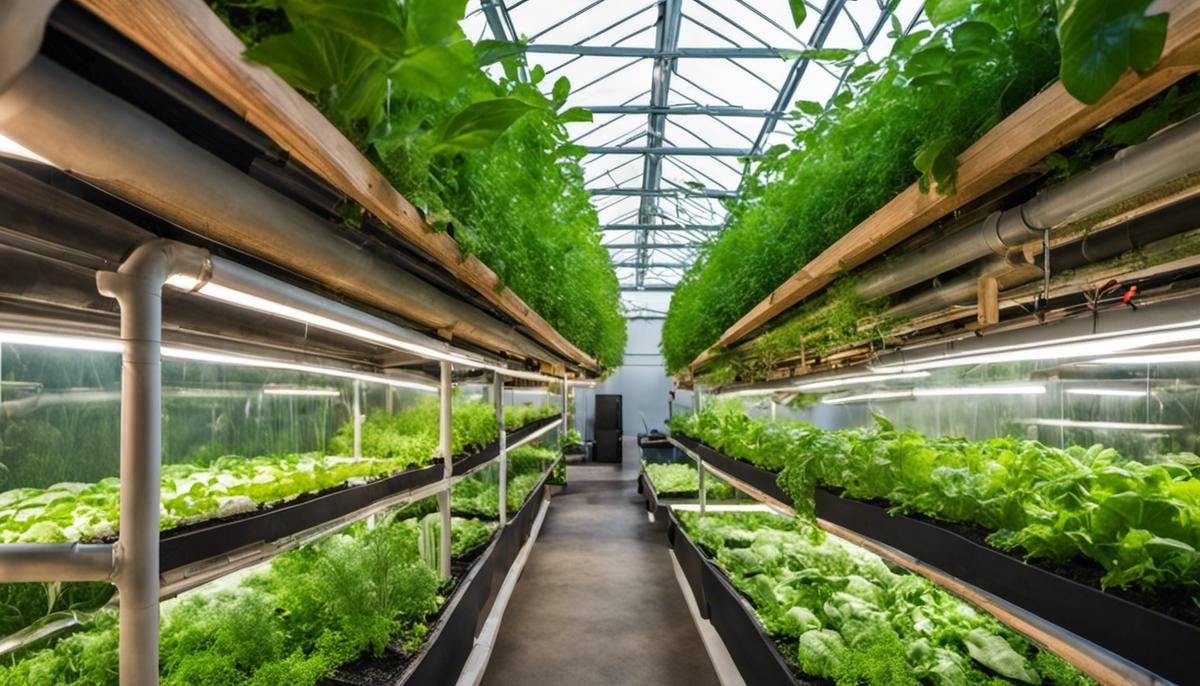
Hydroponic Farming
Stepping into Profitable Hydroponic Farming
Hydroponic farming is undoubtedly a promising and profitable venture for anyone seeking to immerse themselves in the farming business. It’s a unique method that involves growing plants without the conventional soil. Instead, hydroponic farmers use nutrient-rich water solutions to nourish their crops. This advanced method enables farmers to grow plants in limited spaces, proving an excellent solution for urban dwellers looking to venture into agriculture.
Reduced Farming Costs and Greater Yield
The prime plus of hydroponic farming is the reduction of water use. A hydroponic system reuses water, making it more sustainable than traditional farming, which often wastes a lot of water. Moreover, the cost-effectiveness of hydroponics emerges from its immunity to soil-related issues. With no soil required, the problems of soil-borne diseases, pests, and weeds cease to exist, significantly reducing the costs and labor of pest control and weed management.
Controlled Nutrient and pH Levels
Extending more advantages, hydroponic farming allows for complete control over the levels of nutrition that crops receive. Traditional farming does not afford this level of control since nutrients can be uneven due to soil quality and weather variation. However, with hydroponics, farmers can consistently maintain the optimal pH and nutrient balances, thereby ensuring healthier and more productive crops.
Year-Round Farming and Speedy Crop Turnover
Another appealing factor about hydroponic farming is that it’s an all-season means of farming. Weather changes, which often impair traditional farming, have no effect on a well-maintained hydroponic system. This advantage indicates that production in a hydroponic farm is constant and sustained throughout the year. Furthermore, crops in a hydroponic system tend to mature faster, thus allowing for a quicker crop turnover and in turn, yielding faster profits.
Sustainable Urban Farming Opportunities
A bonus benefit of hydroponic farming is the role it plays in urban agriculture. With increasing urbanization, soil-based farms are becoming less available. Hydroponics offers an innovative and practical solution to food production in urban areas with limited space. It opens up opportunities for rooftop gardens or indoor vertical farms, contributing to local fresh produce markets and promoting sustainable urban living.
In essence, hydroponic farming is a win-win situation for aspiring farmers. Its benefits include reduced water and nutrient costs, year-round farming, resilience against adverse weather, and excellent opportunities in urban agriculture. The profitability of hydroponic farming is assured, as long as one is committed and passionate about this innovative agricultural enterprise.

Beekeeping
Beekeeping: A Potential Profitable Farming Practice
Beekeeping, also known as apiculture, offers a lucrative side hustle opportunity that can be done on a small scale alongside other farming activities. Even with a modest number of hives, beekeepers can generate a healthy income from the sale of honey and beeswax.
In addition to the monetary benefits, one of the significant advantages of beekeeping is its positive impact on crop yield. Bees are the world’s premier pollinators, critical for the growth of the majority of fruits, vegetables, and other crop types. Their services can greatly enhance the productivity of your farm, leading to a superior quality and quantity of harvest.
Apart from honey, beeswax can be transformed into various sellable products like candles, lip balm, skin creams, and more. These items have a high demand in markets, thus providing another source of income. Moreover, bee pollen is a revered superfood, with consumers increasingly recognizing its potential benefits on gut health, allergies, and nutrition.
Another profit source is the sale of queen bees and bee colonies to other beekeepers or farmers looking to take up apiculture. A well-maintained bee colony can fetch a good price, allowing for a significant return on investment.
Practicing sustainable beekeeping can also boost your farm’s environmental credentials. This can attract discerning consumers who are willing to pay premium prices for ethically produced goods.
Even though beekeeping might present some challenges such as managing bee diseases and predators, with the right training and support, it can become a rewarding and profitable venture. Beekeeping courses are widely available and are a great way to equip any beginner with essential skills and knowledge.
In summary, from selling honey and beeswax to enhancing crop yield through natural pollination, beekeeping can be more than just a hobby – it’s a profitable, sustainable business that is beneficial for your overall farming ventures.

Poultry Farming
The Concept of Poultry Farming
Poultry farming has become a lucrative industry over the past couple of years. It involves raising domesticated birds such as chickens, ducks, turkeys, and geese with the primary aim of farming eggs or meat. This agricultural enterprise offers a quick return on investment because chickens and other birds mature quickly and are ready for market within a very short time.
Varieties in Poultry Farming
Depending upon the preferences of the consumer markets, one may choose to farm layers for egg production, broilers for meat, or run a hatchery. Each of these specializations come with their unique profit potentials and management requirements. For instance, layers require careful monitoring to ensure optimum egg production, broilers require a well-managed feeding program for optimal growth, and hatcheries need precise control over temperature and humidity for successful hatching.
Benefits and Profitability of Poultry Farming
In addition to the quick returns, poultry farming is also relatively easy to manage compared to other forms of livestock farming. Feed and equipment are readily available, and the infrastructure requirements are minimal, making it a feasible investment even for small-scale farmers. Moreover, unlike other agricultural undertakings that require significant land, poultry farming can be started in small spaces, reducing start-up costs.
Diversification Opportunities in Poultry Farming
The potential for diversification within poultry introduces opportunities for additional revenue streams. Farmers can consider ventures, such as selling chicks, feathers, or manure for fertilizer, leading to additional income. Moreover, there is also an opportunity for value addition, such as processing the poultry meat into sausages or smoked products, further increasing profitability.
Market for Poultry Products
With an increasing focus on protein-rich diets, the demand for poultry products is consistently high. This creates a ready market for eggs and meat, thus ensuring steady revenue for poultry farmers. The ever-growing demand for organic and free-range poultry products presents yet another profitable avenue within this industry.
Challenges in Poultry Farming
Though poultry farming is profitable, it’s not without challenges. Diseases can significantly impact productivity and may even wipe out an entire flock if not managed correctly. Also, fluctuating feed prices can affect the profit margins. However, with proper management practices and preventative measures, these challenges can be mitigated.
Sustainability in Poultry Farming
As awareness of sustainable agriculture grows, poultry farming also contributes to this mindset. It can be a sustainable practice as poultry birds convert feed efficiently, making them less resource-intensive than many other livestock. Moreover, organic waste from poultry can be composted and used as an effective organic fertilizer. This process not only addresses waste management but also contributes to soil health, underlining poultry farming’s holistic approach in agriculture.
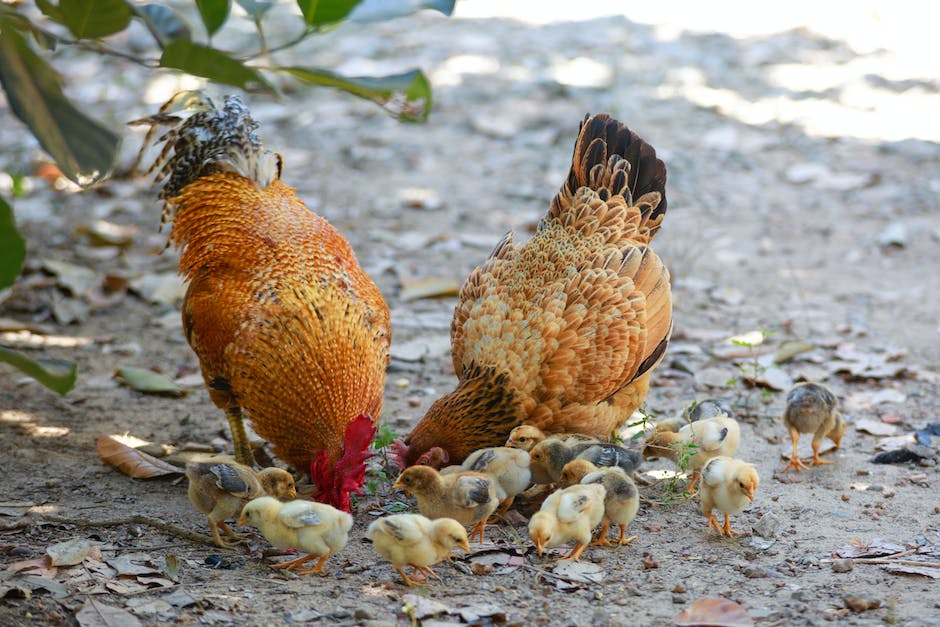
Mushroom Farming
Mushroom Farming: A Profitable Indoor Agriculture
Mushrooms are popular amongst consumers, offering high protein content and a distinctive taste that enhances numerous dishes. This makes them a strong, always-in-demand product in the agricultural market. It’s a versatile crop that can be cultivated indoor under controlled environments.
Mushroom farming could indeed be a lucrative enterprise due to its profitable nature and easy-growing conditions. So, if you live in an urban area with limited open space, you may still venture into this line of farming. The ability to grow mushrooms in a controlled indoor environment ensures a stable supply, regardless of the weather conditions or time of year.
As an urban farmer, you need to find the right kind of space that will provide temperature stability and proper humidity, both crucial for mushroom cultivation. Many people have successfully converted their basements, garages, or sheds into mushroom farms.
In terms of profitability, the market for mushrooms is considerable, given their use across diverse cuisine types, nutritional supplements, and even medicinal applications. It’s crucial, however, to understand the costs involved – establishing the right conditions for growth, getting good-quality spawn, and ensuring regular care.
After the setup, maintaining a mushroom farm is relatively inexpensive. Most mushrooms grow on agricultural waste, such as straw or wood chips – materials that are easy to source and affordable. Once your mushroom farm is up and running, harvesting could be done every few weeks, rendering consistent income.
Aside from the income, mushroom farming can also be environment-friendly. Used mushroom substrates make for excellent compost enriching the soil, which could further reduce costs if you’re also interested in other forms of farming.
Overall, mushroom farming has the potential to transform your urban space into a lucrative agricultural business, offering a steady income while promoting sustainability and contributing to a healthier planet.
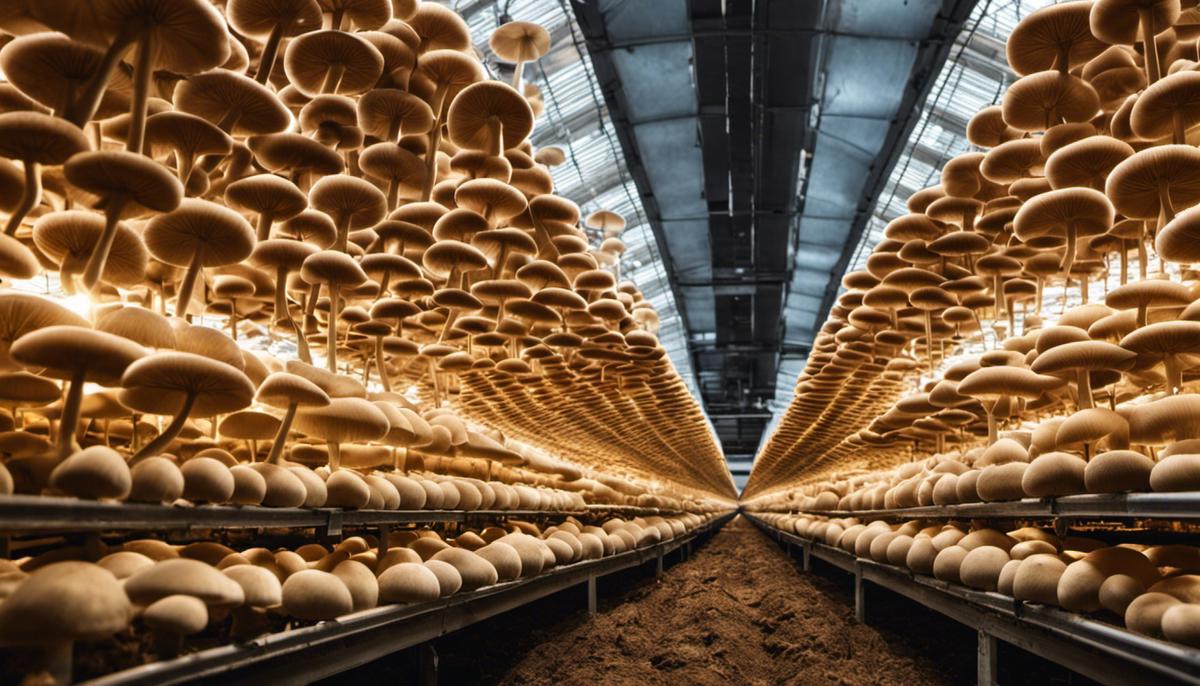
Cattle Rearing
Cattle Rearing for Profit
Cattle rearing has emerged as a potentially lucrative farming business idea, particularly for those interested in producing organic beef or milk. This farm activity involves the raising and nurturing of cows for various purposes including meat (beef), milk, or for labor. Due to the continuous rise in demand for dairy and meat products, venturing into cattle rearing could prove to be a profitable endeavor.
Choosing the Right Breed
The first step to starting your cattle rearing business involves the selection of the right breed of cow. The type of breed significantly influences the overall success of your venture, as some breeds are renowned for their milk yield, others for their meat quality, and some for their strength and suitability for labor-intensive tasks.
Feeding Program for Optimal Productivity
Apart from breed selection, an effective feeding program is a critical factor determining the profitability of your cattle rearing business. Providing your cattle with the right amount of nutrients-rich feed prevents diseases and promotes healthy growth, thereby optimizing their productivity.
The Benefits of Organic Farming
One profitable strategy of cattle rearing is focusing on organic farming. Many consumers today are becoming more conscious of their diet and health, leading to an increased preference for organic meat and dairy products. Raising your cattle organically and feeding them on natural grass and grains not only contributes to healthy livestock but also attracts a premium in the marketplace.
Diversifying Revenue Streams
The potential profitability of cattle rearing is not just limited to selling beef and dairy products. Candle makers, soap manufacturers, and cosmetic companies, among others, also utilize byproducts like fat and hide in their processes, further increasing potential revenue streams.
Commitment and Proper Management
However, successful cattle rearing requires full commitment and proper management. It involves regular health inspections and adherence to correct breeding practices. It’s also crucial to keep tabs on current market trends, whether it’s the demand for organic milk, a particular type of beef, or cattle-related byproducts. Providing your cattle with a comfortable environment and managing their health appropriately not only increases productivity but also contributes to animal welfare, both of which are points held in high regard among informed consumers.
In Conclusion
To conclude, cattle rearing can be a profitable farming venture if adequately managed. By choosing the right breeds, implementing effective feeding programs, keeping a keen eye on market trends, and focusing on dairy or organic beef production, you can get the most out of your investment.
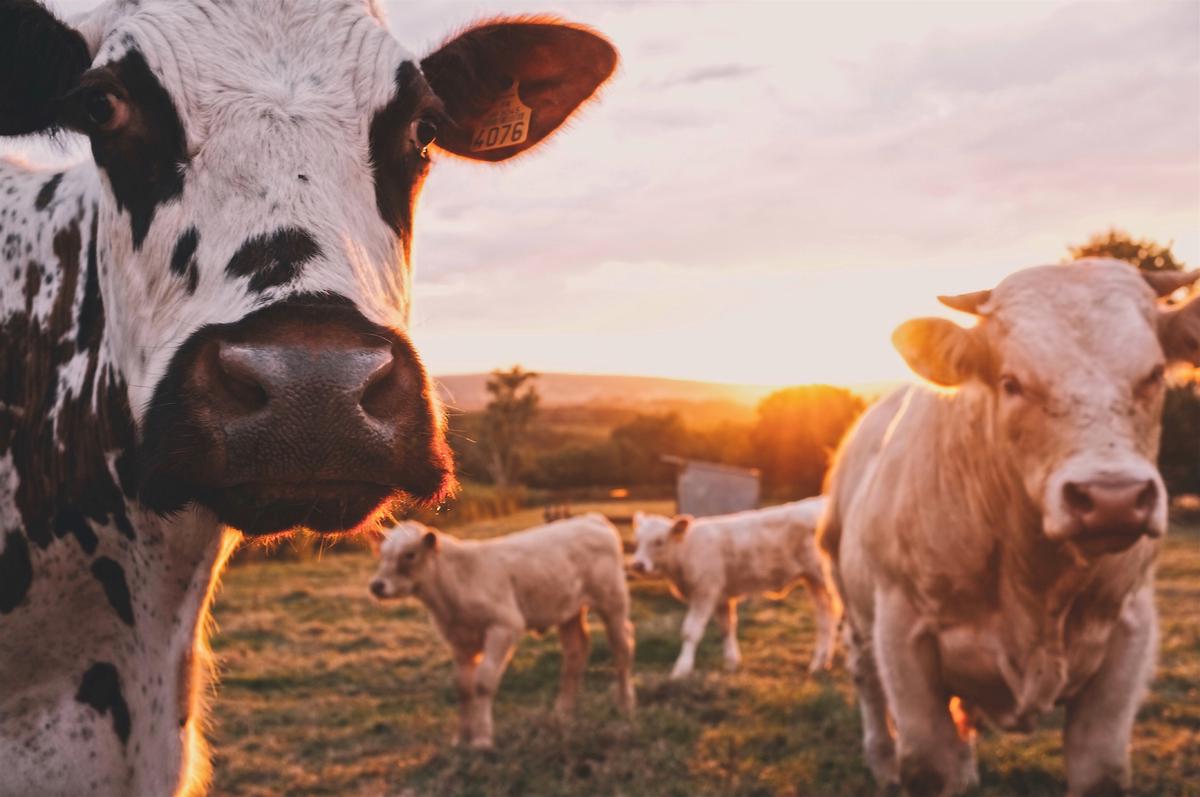
Photo by stijntestrake on Unsplash
Snail Farming
High Demand and Profits in Snail Farming
With increased recognition of their nutritional and culinary benefits, snails have become a sought-after delicacy. This consumer trend is driving an increased demand for snail farming or heliculture. The process of raising snails for their meat, coupled with their use in high-end skincare products, makes heliculture a potentially profitable venture.
Nutritional Benefits of Snails
Snails are highly nutritious, rich in protein and iron, low in fat, and provide nearly all the amino acids required by humans, making them a healthy food choice. This nutritional profile not only meets the dietary needs of health-conscious consumers but also appeals to gourmet food lovers. Notably, the high protein content is a choice pick in many premium restaurant menus, further fueling the demand for snail farming.
Growth Opportunities in Skincare Industry
The skincare industry has discovered the benefits of snail mucus in cosmetic products. Rich in hyaluronic acid, glycoprotein enzymes, antimicrobial and copper peptides, snail mucus has regenerative properties beneficial for the skin. This is leading to growing opportunities for snail farmers as they can sell both their meat and mucus, presenting a dual-income stream.
Low Initial Capital and Easy Maintenance
One of the main attractions of snail farming is the relatively low start-up capital compared to other livestock businesses. Snails reproduce rapidly, and they can be harvested within 6 to 12 months. Moreover, snails are easy to maintain, require minimal space and feed on a wide range of foods, making it a less resource-intensive business option.
Sustainable and Environmentally Friendly
Snail farming is also a sustainable and environmentally-friendly option. Snails produce lower greenhouse gas emissions compared to other livestock farming. Besides, the shells often discarded during processing can be ground and used as a calcium-rich supplement for other animals. This further contributes to reducing waste and promoting a circular economy.
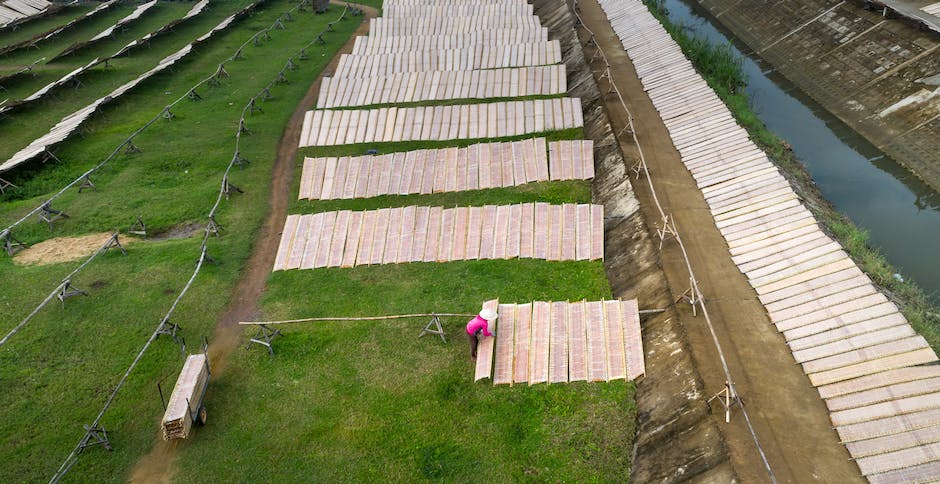
Herb Farming
Turning a Profit with Herb Farming
Herb farming presents a ripe opportunity for savvy business-minded individuals to capitalize on a growing consumer trend. Increasingly, people are seeking out fresh, organic herbs for culinary and medicinal use, making the herb farming business more lucrative than ever.
Herbs such as basil, parsley, and mint are popular choices for the culinary-minded consumer. These herbs add vibrant flavors to meals and are frequently used in various cuisines, making them excellent choices to grow for profit. Additionally, other less common but still highly profitable herbs can be farmed, such as thyme, rosemary, and dill. Farming these culinary herbs not only provides a steady income stream, but also contributes positively to the local food economy.
More than just culinary delights, herbs can also serve medicinal purposes. Many people are interested in holistic and natural remedies to manage their health. Medicinal herbs such as echinacea, chamomile, and lavender can be farmed and sold as herbal medicines, teas, essential oils, or skincare products.
Herb farming can be a versatile business venture because of the various ways herbs can be sold and used. They can be sold fresh, dried or even processed into other products. Furthermore, depending on the region, size of the farming operation, and particular herbs grown, significant profits can be made. Keep in mind that as with any business, success will hinge on understanding the market, defining the niche, and effectively marketing the products.
A noteworthy trend to capitalize on as a herb farmer is the rise of farm-to-table restaurants and health-conscious consumerism. These establishments and consumers are constantly on the hunt for local, organic produce, and herbs are no exception. The demand for locally-grown, organic herbs has been steadily increasing, and this presents a unique opportunity for the herb farmer to build a profitable business.
Herb Farming: A Sustainable Choice
In addition to its profit potential, herb farming can also be a sustainable and environmentally-friendly enterprise. Many herbs are able to thrive without the use of chemical pesticides, and their farming often requires less water and land than other agricultural crops. Additionally, herb farming has the potential to support pollinators, like bees, thus contributing positively to local ecosystems.
In sum, herb farming is more than just an opportunity to turn a profit. It’s an opportunity to contribute to healthier meals, improved wellness, and more sustainable farming practices.

Fruit Farming
Unleashing the Potential of Fruit Farming
In the past few years, the importance of organic farming has been recognized more prominently. Fruit farming, a vital segment of organic farming, has become a rewarding business opportunity due to the soaring demand for fresh, chemical-free fruits. The spectrum of this business extends from planting and nurturing the trees to selling the produce, which often fetches a high premium.
A Niche Market with Lucrative Prospects
With the rising health consciousness among consumers, the sale of organic fruits continues to trend upwards giving an edge to fruit-farming businesses. Cultivating different types of fruit trees not only provides a steady flow of income throughout the year but also ensures financial security due to high consumer demand.
Choice of Fruit Is Key
Successful fruit farming relies on several factors, the prime being the choice of fruit grown. Certain fruits, due to their high market demand and premium pricing, result in high profits. Consider factors like regional climate, soil type, and water availability when selecting the type of fruit to grow.
Critical Role of Tree Care in Profitability
Proper care of the trees is another essential aspect that profoundly impacts the profitability of fruit farming businesses. From the time of planting to the stage of fruit-bearing, consistent and proper care ensures a healthy yield and a better return on investment.
Need for Effective Marketing
In the world of business, selling is as important as production. Fruit farming is no different – the fruits must be marketed effectively. From setting up stalls in local markets to selling at premium grocery stores or online, reach out to the potential buyers through all possible channels.
The success of a fruit farming business is dependent on various factors including fruit selection, tree care, and marketing strategies among others. Therefore, a combination of careful planning, diligent efforts, and strategic marketing can indeed make fruit farming one of the most profitable farming businesses.
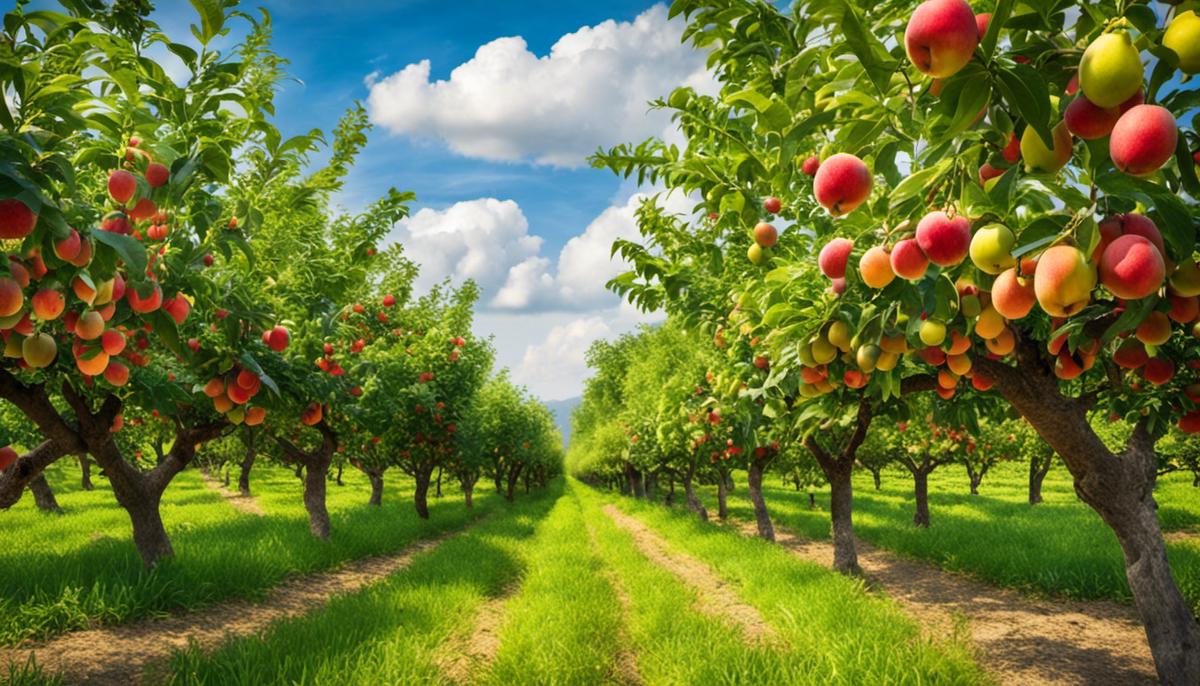
Understanding these ten farming business ideas undeniably opens up a realm of opportunities for both existing and aspiring farmers, highlighting the boundless potential of sustainable and specialized farming sectors. The choice to embark in organic farming, aquaponics, hydroponics, or even explore unusual farming opportunities like snail farming or mushroom farming, offer unique advantages and profitability based on market demand, investment, and personal interest. Above all, these initiatives contribute to a healthier planet and prosperous communities, marking a significant step towards a sustainable future. As time progresses, it is clear that farming is not just about tilling the soil and rearing animals, but continually adapting and evolving to meet the needs of the ever-changing world.








